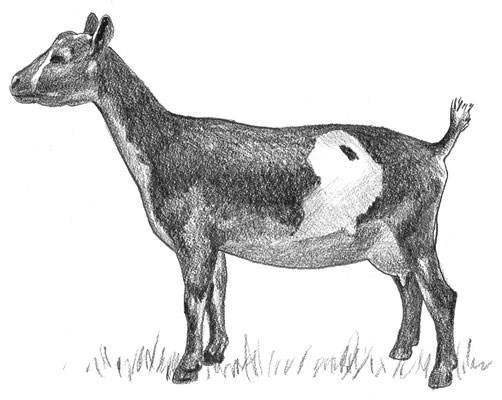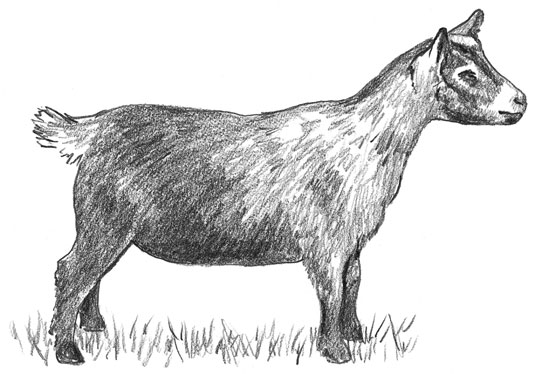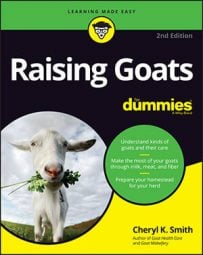If you want to raise goats to promote a more sustainable lifestyle, but you have limited space or don't want to be drowning in goat milk, the miniature dairy breeds might be good choices for you.
Miniature breeds are relatively new to the scene but are growing in popularity. Miniature dairy goats include Nigerian Dwarves, Pygmies, and the most recent development in dairy goats in the United States: miniature, crossbred versions of the standard breeds, called minis. Check out these miniatures:
Nigerian Dwarf: Nigerian Dwarves came to the United States from Africa. They are not true dwarves because they are proportionate in size. They are colorful, friendly, easy to handle, and in some cases good milk producers.
The Nigerian Dwarf Goat Association allows 17 to 21 inches for does and 19 to 23 inches for bucks, while the American Goat Society allows a maximum of 22.5 inches for does and 23.5 inches for bucks. They average around 75 pounds.
Some urban goat farmers shy away from the Nigerians, despite their petite size, because they can be loud. But their kids are the cutest things around, and Nigerian Dwarves have a lot of them. The does tend to be easy kidders and natural mothers.
Some Nigerian Dwarves give only about a pound (one pint) of milk per day, but others produce as much as 8 pounds (a half-gallon). A lot of them are hard to milk because of their small teats, but others have been bred to alleviate this problem.
You can eat a Nigerian, but most people don't. It isn't cost effective, and besides, they're so darn cute!
 The adorable Nigerian Dwarf.
The adorable Nigerian Dwarf.Pygmy: Pygmy goats aren't usually considered dairy goats, but they can be milked. Most of them are raised as pets or 4-H projects, but a small minority of breeders raise them for milk. The Pygmies raised for milk tend to look more like Nigerians in body shape. If you want Pygmies for milk, make sure to ask whether they're registered with the American Goat Society and whether the breeder is milking them.
 Pygmies are cute, but they have their problems.
Pygmies are cute, but they have their problems.Pygmies have been bred to be short and stocky and are more limited in color, ranging from white to brown to black with only minor variations. Because they have been bred down to a short, compact size, Pygmies often have problems kidding and need the services of a veterinarian for cesareans. They are not quite as prolific as the Nigerians, either.
Kinder: The Kinder is a moderate-sized breed that was developed in Washington and first registered in 1988. It is a cross between the Pygmy and Nubian breeds. Kinders are good dual-purpose (milk and meat) goats that are ideal for family farms.
Minis: If you really like one of the standard breeds but are in the city or just don't have the space for big goats, minis are ideal. These goats are a cross between a Nigerian Dwarf buck and a doe of the breed you want to miniaturize.
Don't breed a full-sized buck to a Nigerian Dwarf doe. The doe may have problems kidding as a result of too-large kids.

